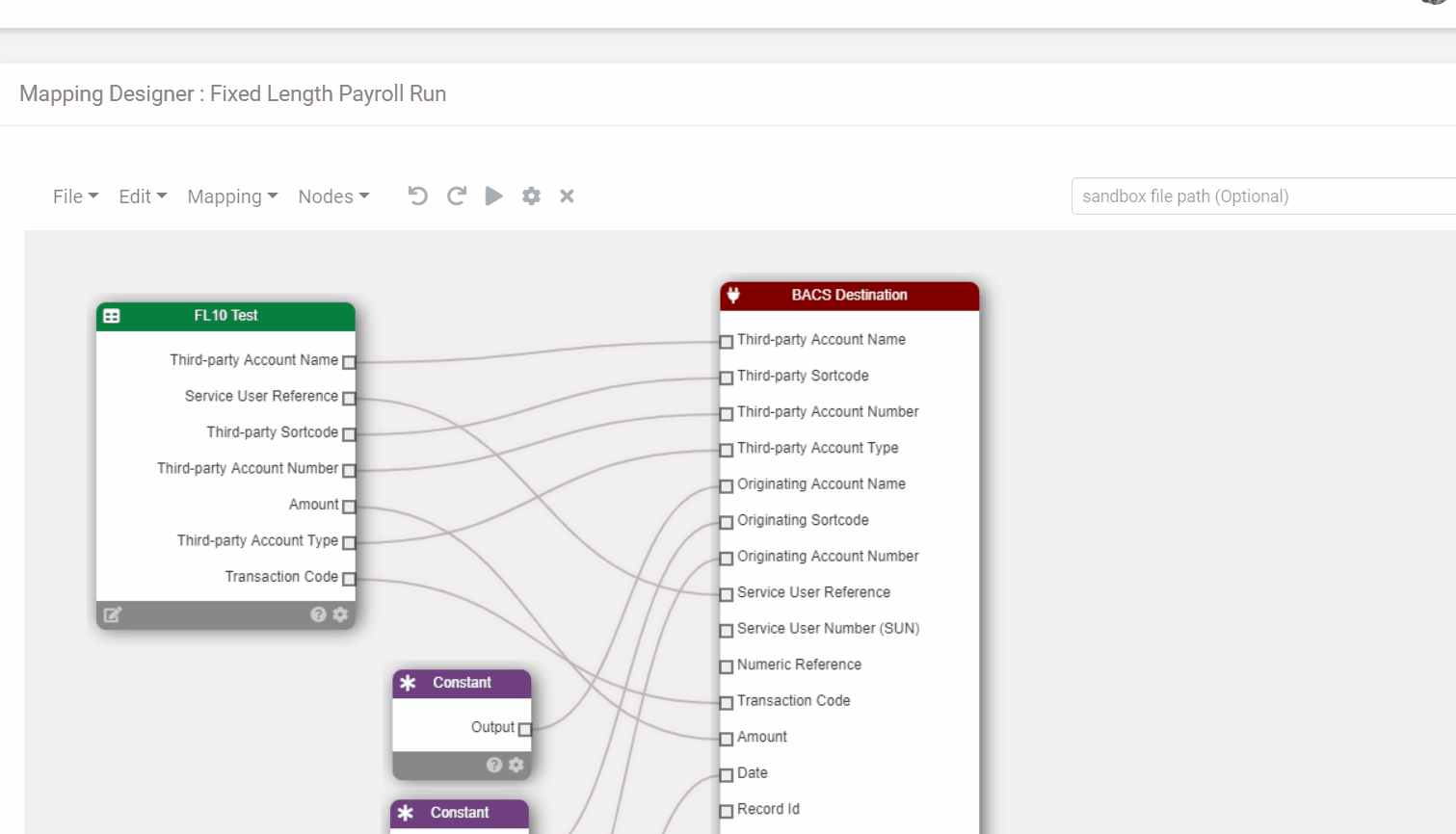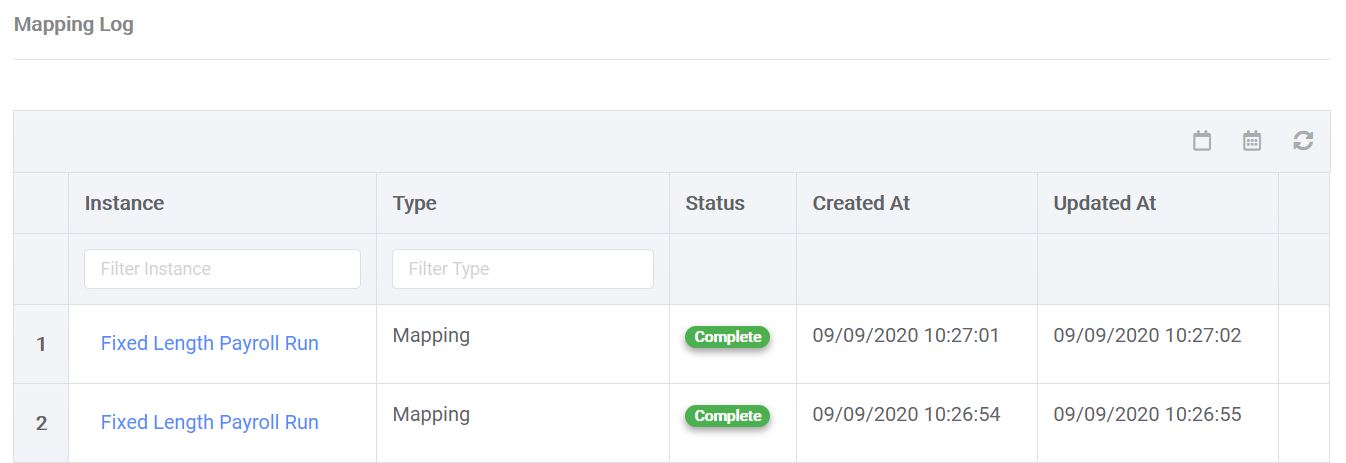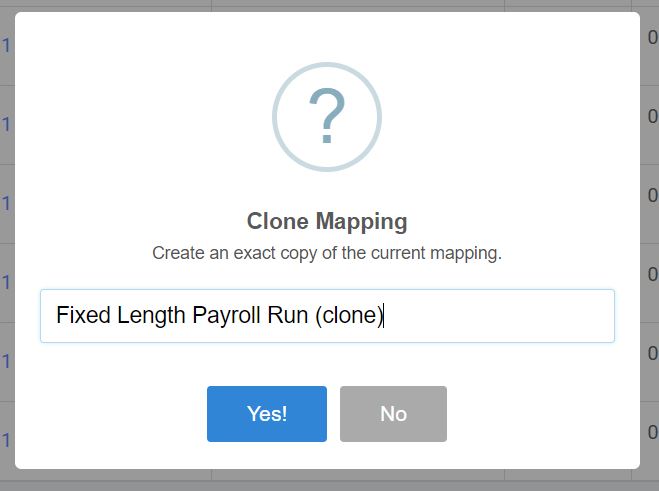Mapping Detail
Mapping Detail
The Mapping Detail page provides a simple dashboard for a specific mapping.
When you click to edit an existing mapping you will be taken to the Mapping Detail page. This page displays useful information about the mapping including metadata and logs of past executions.
To continue to the mapping diagram click the ‘Edit mapping’ button in the top left of the page or at the bottom right of the page.
Metadata

This section shows information about the mapping, the title and description, who created it and what type of mapping it it.
Title
This is an important field that is used to identify your mapping. This field is shown in tables of available mappings and in logs and audits.
When naming a mapping it is best to give it a short and concise title. Naming a mapping ‘finmap123’ may lead to confusion about what the mapping does especially if another Paygate user is using the system. Choosing a title such as ‘Monthly Payroll’ is unlikely to be misinterpreted or misunderstood.
Description
You should use the optional description field to give more information about what the mapping does and how it is used in the organisation. Over time you might build up a large collection of mappings and you will want to be able to quickly determine their function and role in your organisation.
Tags
User defined tags that can be used to find and manage mappings
Author
The name or names of the author of the mapping.
Workflow Type
The is the type of mappings such as BACS.
Editing Metadata
You can edit the mapping metadata from the mapping Diagram. Open the mapping in the designer and click ‘Mapping’ in the diagram menu and select ‘Mapping Metadata’.

Heatmap
The heatmap attempts to show mapping usage. The heatmap displays when a particular mapping was run and how often.

Each block represents a single day of the week. Days are ordered into columns that represent a single week. When the mapping is run, on a specific day, the colour of the block, representing the day, starts to change colour. The deeper the colour the more often it has run in that day.
With your mouse, hover over the days to view a popup that shows both the date and the number of ‘runs’ for that mapping on that day.
The heatmap can be used in a number of ways:
- As a diagnostic aid. You can quickly see if a mapping has or has not run on a particular day.
- To filter logs. Clicking a day will filter the logs in the ‘Mapping Log’ section below the heatmap.
Mapping Log
This section shows logging entries for the mapping. Typically a log entry is created each time the mapping is run - this includes running the mapping directly from the designer or if the mapping is run from a workflow or to import data into a BACS submission.

Click a mapping entry to start drilling down into the individual mapping events. See the logging section for more details.
Clone Mapping
Cloning a mapping creates a copy of a mapping. The new (cloned) mapping will shared the importer from the donor mapping but won’t included any historical logs, audits or be a part of any existing workflows.

Click the ‘Clone’ button. You will be asked to provide a name for the new mapping - Paygate will suggest a name based on the donor name but you can choose a different name if required.
Delete Mapping
Deleting a mapping will remove the mapping from the system. You will be prompted for a confirmation before deletion takes place.
Mapping Protection
The system will not let you delete a mapping that is currently being used by a workflow or a group. This is to protect you from inadvertently deleting a mapping and causing a workflow or payment process to fail.
If you attempt to delete a mapping that is in use by a workflow or group an error will be displayed. The error message will give details of the workflow or group that is using the mapping

In this situation, to delete the mapping remove the mapping reference from with the group or workflow.
